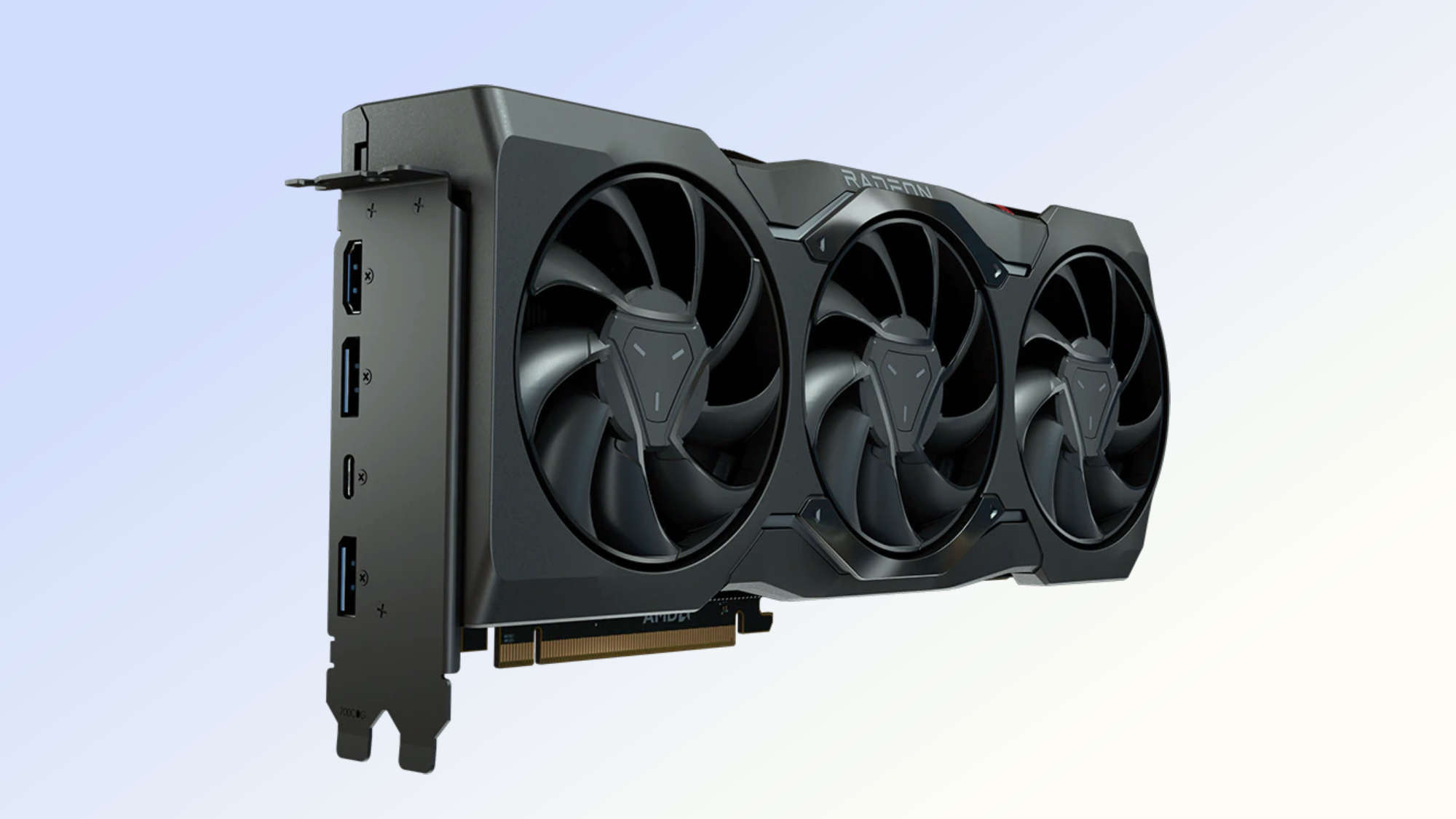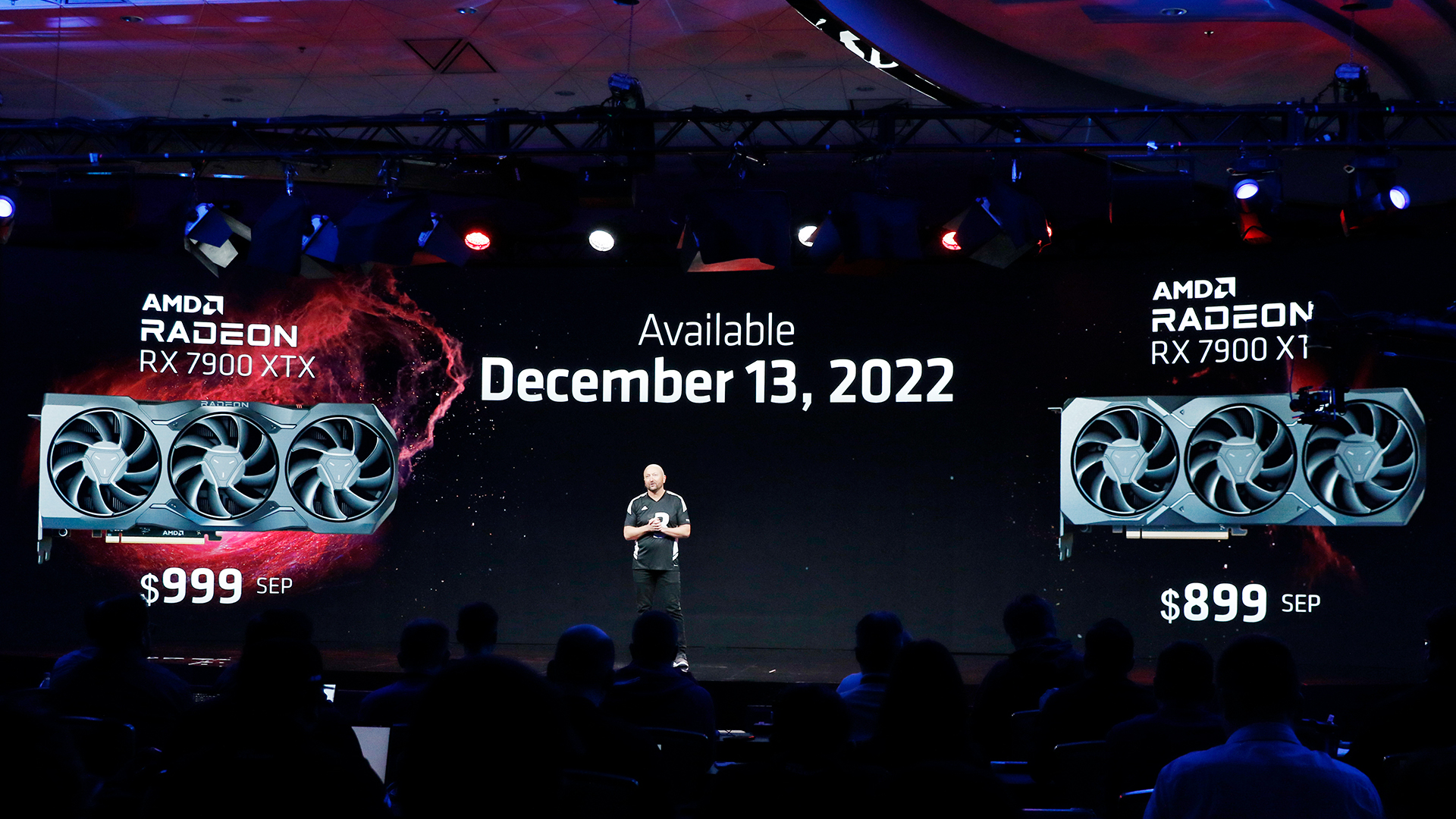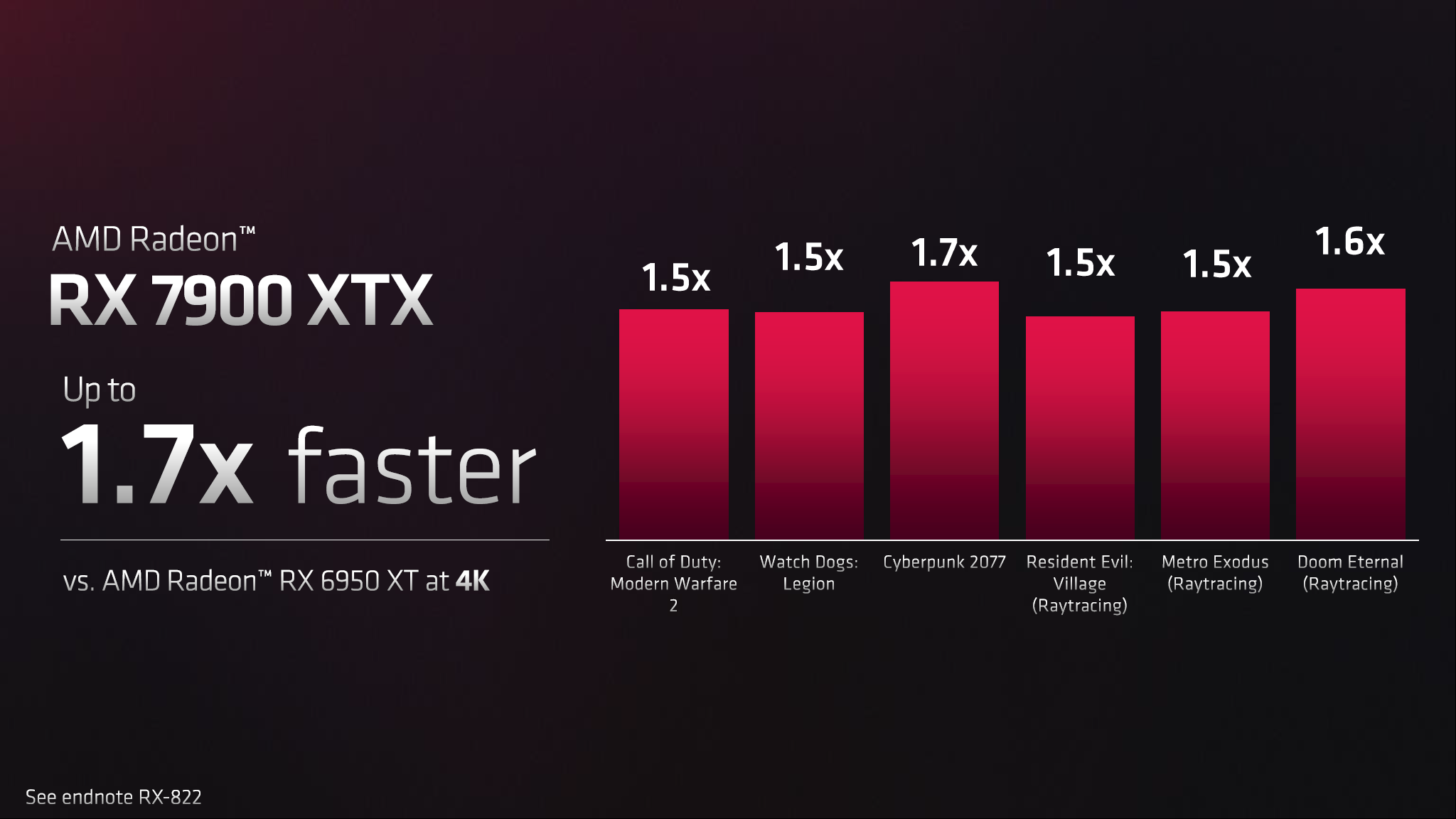AMD unveils first Radeon 7000 GPUs: everything you need to know

The team at AMD unveiled the first two graphics cards in the company's new Radeon 7000 series today (November 3) — the Radeon RX 7900 XT and 7900 XTX. These are the first AMD GPUs built on the company's new RDNA 3 architecture, and they could bring some serious competition to Nvidia's new 40-series cards in the months ahead.
What's perhaps more intriguing is that these are the first AMD GPUs to feature a chiplet design, something competitors Intel and Nvidia have not (yet) attempted. AMD is more familiar with the technology, having already employed it in the design of its new Ryzen 7000 CPUs.
Understanding how chiplet GPUs differ, performance-wise, from more traditional GPU designs is a complicated topic. Our sibling site Tom's Hardware has an excellent in-depth interview with AMD's Sam Naffziger about entering the GPU chiplet era and what it means for the industry. But if you just want a simple answer, chiplet designs let AMD stack individual self-contained "chiplets" tightly together in configurations that are potentially more powerful and power-efficient than a processor on a single piece of silicon.
AMD Radeon RX 7000 GPUs: Specs
| Row 0 - Cell 0 | AMD Radeon RX 7900 XT | AMD Radeon RX 7900 XTX |
| Price | $899 | $999 |
| Compute units | 84 | 96 |
| Ray accelerators | 84 | 96 |
| Game frequency | 2000 MHz | 2300 MHz |
| Infinity Cache | 80 | 96 |
| Max memory size | 20GB GDDR6 | 24GB GDDR6 |
AMD Radeon RX 7000 GPUs: Price and release date
AMD has long held a reputation for selling CPUs and GPUs that are a bit easier on the wallet than what the competition charges, and the company is leaning into that this time around with its new Radeon 7000-series GPUs.
The Radeon RX 7900 XTX is the new top-of-the-line card that AMD claims is up to 1.7 times faster than its predecessor, the Radeon RX 5950 XT. AMD has given it a $999 price tag.
The new Radeon RX 7900 XT is a less powerful version that's a step down from the XTX, and when it hits store shelves it'll have an MSRP of $899. Both cards will go on sale December 13, and you'll be able to buy models from both third-party vendors and AMD itself.

This is a bit of a price hike from the previous generation, as the Radeon RX 6900 XT cost $679 while the more powerful 6950 XT sold for $849. Still it seems like nothing compared to the new Nvidia GeForce 4080 and 4090, which recently went on sale for an eye-popping $1,299 and $1,599 respectively.
Get instant access to breaking news, the hottest reviews, great deals and helpful tips.
AMD Radeon RX 7000 GPUs: New features
These new AMD GPUs come with a smorgasbord of improvements and new features which should make them more versatile and performant than previous generations.
If you care about game performance and ray tracing you should get excited about the fact that AMD claims to have improved the Ray Accelerators in this generation of cards, meaning they can handle up to 1.5x more rays in a more efficient fashion.
AMD also talked up its FidelityFX Super Resolution upscaling technology, which is similar to Nvidia's DLSS (Deep Learning Super Sampling) graphical upscaling tech. FidelityFX Super Resolution (FSR) 2.1 is available now in many games, and AMD expects to roll out the upcoming FSR 2.2 as soon as November 8 in Forza Horizon 5.
If you care about working with video, the new AMD Radiance Display engine in these cards expands their support for video output formats in intriguing ways. Notably, you get support for DisplayPort 2.1 and up to 480Hz refresh rates on a 4K monitor, or up to 165Hz on an 8K display.
You also get upgraded dual media engines capable of supporting a pair of 8K/60fps (frames per second) streams, so you can encode video with one and decode with the other or focus on one encode at full power.
Plus, these 7000-series cards now support the AV1 codec, which is already supported by the latest Nvidia and Intel Arc cards.
AMD Radeon RX 7000 GPUs: Outlook
With these new Radeon RX 7000-series GPUs AMD has fired a shot across the bow of Nvidia's 40-series cards.
We were already feeling a bit uncomfortable about being asked to pay upward of $1,299 for a new Nvidia 40-series GPU that probably delivers more power than all but the most hardcore 4K game fans need. And now AMD has brought its most powerful new toys to market at prices that are hundreds of dollars cheaper.
Of course, whether AMD's new GPUs can compete with the top-tier offerings from Intel and Nvidia remains to be seen. We'll have to wait and see how these cards perform once they hit the market and start getting benchmarked, but right now AMD looks to have undercut Nvidia in a moment of weakness and delivered some sizzling-hot new GPUs into a market of customers aching to pay more reasonable prices for graphics cards.

Alex Wawro is a lifelong tech and games enthusiast with more than a decade of experience covering both for outlets like Game Developer, Black Hat, and PC World magazine. A lifelong PC builder, he currently serves as a senior editor at Tom's Guide covering all things computing, from laptops and desktops to keyboards and mice.

